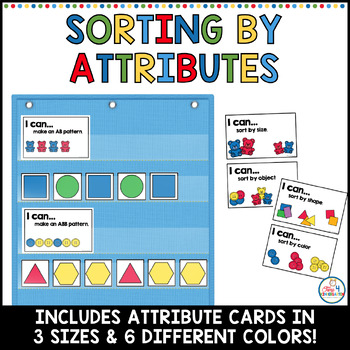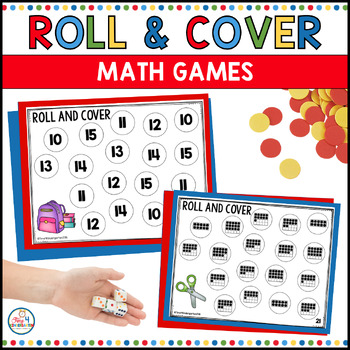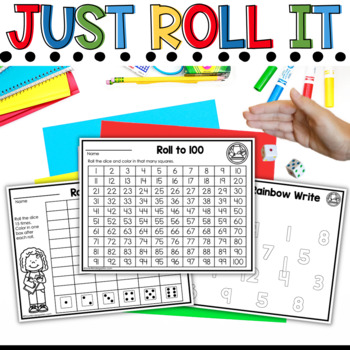Teachers are always looking for new and creative ways to use math manipulatives. It is amazing how a small mth manipulative can help facilitate learning. It is the hands-on use of these manipulatives that help cement the concepts. Often kids think they are just playing, but in reality, they are learning.
Dice
Roll and cover activities are always popular in primary classrooms. They are easy to create and set up. Using dice doesn't have to be limited to just Roll and Cover games. Dice can also be used for addition, subtraction, add 1 more, doubles, and number comparing.
Pattern Blocks
My students always love using pattern blocks. Sometimes I give them a bin with these blocks and sit back to watch them create and listen to their conversations. These six color-coded geometric shapes let kids be creative and imaginative. Other times, I give them the bin with a certain task in mind. Pattern blocks can be used for sorting, patterning, fractions, and geometry. They are a great addition to any math center or morning work tub.
Snap Cubes
Snap cubes or linking cubes- there are two styles. One kind just snaps together end to end. The other type has multiple snapping and fitting options and can be used to make creative configurations. Both of these cube styles can be used for patterning, addition, subtraction greater and less than, one-to-one correspondence, sorting, making ten, one more one less, skip counting by 2's, 3's, and so on. As well as weight and measurement. In older grades, they can be used to create multiplication arrays and division They can also just be used as game pieces for Roll and Cover type activities.
Playing Cards
These are easy to come by and often kids have a deck of cards at home. Many students are already familiar with the game war. This game is great for teaching number recognition, counting, and comparison. You can also switch it up and have the lower card be the determiner. Playing cards can also be used for addition, subtraction, and one of my favorite games, making ten or any other number you choose. You can use the same "wargame" concept, for addition and subtraction games. Students would each turn over two cards in this model and either add their sums to see who has the higher hands or subtract the lower card from the higher card to see whose hand is higher. These games make great math center and earlier finisher activities. Once students know how to play, chances are they will also be playing them at home.
Dominoes
Dominoes are another versatile math manipulative. Many teachers use dominoes for one-to-one correspondence. Besides just counting the dots on each tile, they can also be used for addition, subtraction, and multiplication. One way to use dominoes in an addition game is to play as if you were playing war. Each student would receive the same amount of dominoes. Each would then turn one tile over to review the dots, add the dots and compare to see who has the larger amount.
Several of these math manipulatives listed can also be used together. For example, the playing cards can be used with the linking cubes. Students can turn over a card, build a tower with the cubes, then compare towers. The same activity can be used with dominoes. students can either play by themselves comparing the two sides of the dominoes or use them in an addition game and comparing with the other player.
The possibilities are endless when it comes to using these math manipulatives. Kids are creative, it could be fun to give them two of the mentioned math manipulatives above and ask them to design a game. Think of all the creative thinking and imaginative ideas that can arise when students are given the opportunity to explore.
Resources You Might Like
Using manipulatives gives children an opportunity to learn new concepts through hands-on exploration. Through touching and exploration, students can understand abstract, difficult, or complex mathematical concepts.









No comments
Post a Comment